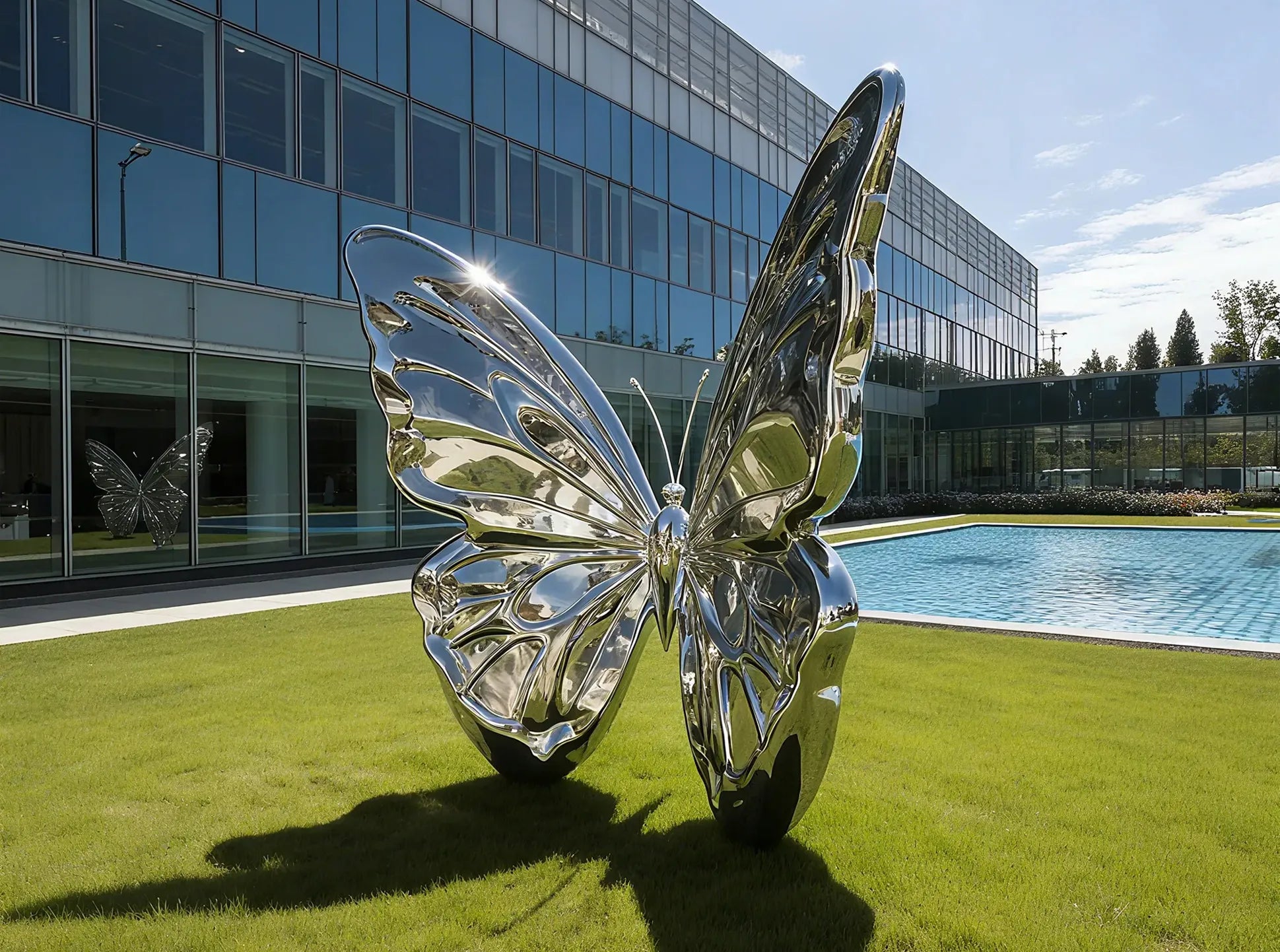Outdoor sculptures bring timeless beauty and personality to gardens, patios, courtyards, and architectural spaces. Whether your piece is a marble garden statue, a bronze sculpture, or a stainless steel art installation, proper care ensures it stays stunning for years to come. Understanding how to protect sculptures from weather damage not only preserves their artistic value but also helps you make the right investment when choosing a new piece for your outdoor space.
Understand How Weather Affects Different Materials
Every material reacts differently to sunlight, rain, and temperature changes. For example, bronze sculptures naturally develop a patina over time, adding character and uniqueness. However, improper cleaning can damage this protective layer, exposing the underlying metal to moisture and accelerating corrosion. Marble is elegant, but it's inherently porous. Rain and dew can gradually seep into its tiny pores, leading to dark water stains over time. In cold weather, trapped moisture may freeze and expand inside these pores, potentially causing surface cracks. Meanwhile, stainless steel garden sculptures resist rust but can lose their polished shine under UV exposure or in coastal environments.
Before purchasing, it’s important to consider your local climate and match it with the right material. For example, in regions with frequent rainfall, opting for marine-grade stainless steel is ideal, while in colder climates, it’s best to avoid porous stone materials. These choices can help minimize maintenance needs and extend the sculpture's lifespan.
Regular Cleaning: The Foundation of Sculpture Care
Routine cleaning is essential for keeping your outdoor art sculpture looking its best. Dust, bird droppings, pollen, and pollution can all degrade finishes over time. When cleaning marble sculptures, use a soft damp cloth to gently wipe the surface, and avoid harsh chemicals that could damage or corrode the stone. For bronze sculptures, it’s recommended to apply a thin layer of clear wax regularly. This helps enhance the shine and protect the surface.
When it comes to stainless steel outdoor sculptures, wiping with a damp microfiber cloth followed by a dry polish keeps the mirror finish brilliant. Establishing a monthly or seasonal cleaning schedule can dramatically improve the durability and aesthetic appeal of your artwork.
Shield Sculptures from Harsh Sunlight and Rain
UV radiation and heavy rain are two of the biggest threats to garden sculptures. Prolonged sunlight can fade pigments on painted metal or resin finishes, while acid rain can gradually erode marble surfaces. Consider placing your sculpture where it receives partial shade or using a protective sealant for outdoor marble sculptures once or twice a year.
For metal works, especially bronze sculptures, applying a thin coat of wax not only enhances color depth but also acts as a barrier against water and air pollutants. These small steps help your outdoor art piece maintain its original brilliance for decades.
Protecting Sculptures in Cold and Humid Climates
Long-Term Preservation and Expert Restoration
Even with the best care, outdoor art eventually shows signs of aging. Partnering with professional restorers or choosing suppliers who offer custom sculpture maintenance services can preserve your sculpture. Regular inspections allow early detection of small issues before they become structural damage.
When selecting a new piece, consider working with creators who use outdoor-grade materials, UV-resistant finishes, and protective coatings for sculptures. These details not only safeguard the artwork but also reflect high craftsmanship and long-term value—qualities you should always look for when purchasing fine garden art.
Caring for outdoor sculptures is both a science and an art. With thoughtful material selection, consistent cleaning, and mindful protection from the elements, your sculpture will remain a breathtaking centerpiece for generations.











